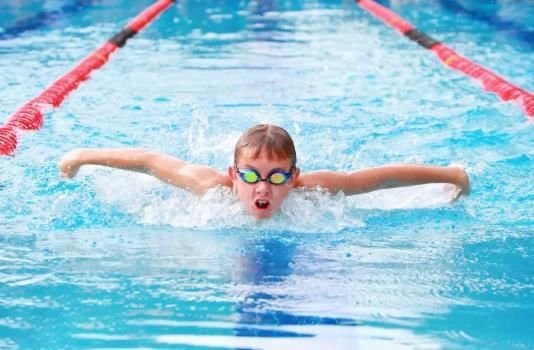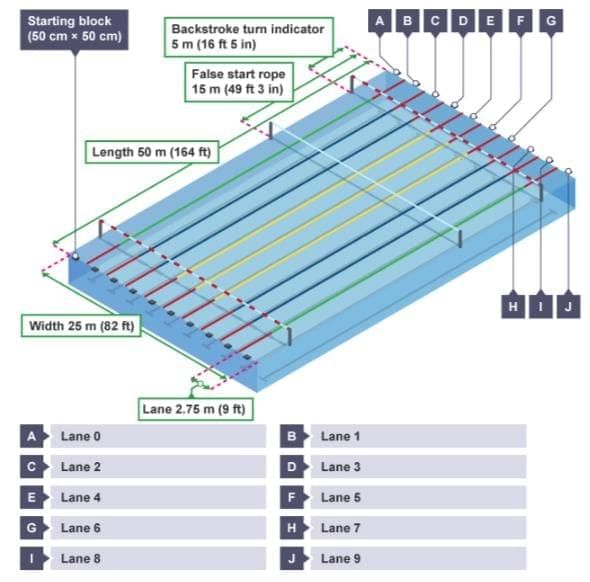Factfile: Swimming | Physical Education for Year 6 PDF Download
Swimming: An Overview and Historical Perspective
Overview
Swimming is a sport encompassing individual and team races across various distances, featuring five primary strokes:
- backstroke
- breaststroke
- butterfly
- freestyle
- combination of the above
It is widely recognized through its prominence in the Olympic and Paralympic Games, which include 34 officially sanctioned events (17 for men and 17 for women), each governed by specific regulations concerning timing, judging, starts, and finishes.

Beyond competitive settings, swimming is a widely enjoyed recreational activity, offering a low-impact, full-body workout suitable for people of all ages and genders due to its minimal strain and resistance.
History
The public’s fascination with swimming surged in 1875 when Matthew Webb became the first recorded person to swim the English Channel, completing the feat in 21 hours. This interest culminated in swimming’s debut at the inaugural modern Olympic Games in 1896, where events were held in the Mediterranean Sea rather than modern indoor pools. Early competitions predominantly featured the breaststroke until 1902, when Australian Richmond Cavill introduced the modern freestyle technique. Initially, swimming was male-dominated, but women’s events, including the 100-meter freestyle and 4 × 100-meter freestyle relay, were introduced at the 1912 Olympics. By the 1930s, swimming’s global appeal was firmly established, prompting innovations like the butterfly stroke and, by 1976, the permitted use of goggles. Today, men’s and women’s swimming programs are nearly identical, with the only distinction being the longer freestyle distances of 800 meters and 1500 meters.Swimming Competitors and Competition Areas
Competition Area
- Swimming pool - competitive swimming events can take place in both 25 metre and 50 metre pools.
- Lanes - each swimming pool is split into eight separate lanes of 2.75 m and the outer lanes must have an additional empty space of 40 cm of water.
- Ropes – the outer lanes must have a green rope, four blue ropes for lanes 2, 3, 6 and 7, and three yellow ropes for lanes 4 and 5. The last five metres of the ropes are red to indicate the end of the pool.
- Starting block – the top of the starting platform should not be less than 50 cm by 50 cm and slope no more than 10°. The entire surface of the platform should be covered with a permanent non-slip material.

Competitors
Swimming involves individual or team races across five main strokes: freestyle, backstroke, breaststroke, butterfly, and the individual medley, which incorporates all four strokes. Unlike athletics, both men and women compete in all these events, ensuring equal participation across genders.
Swimming Scoring, Rules, and Officials
Scoring
Swimming success is measured by times and finishing positions rather than points or goals. Races begin with an electronic starting pistol, which may sound again to signal a false start. Swimmers must touch a pressure pad at the end of their lane to stop the clock and record their time.Rules
Swimming’s technical rules ensure fair competition and uniformity. Each stroke has specific regulations to prevent any competitor from gaining an unfair advantage. Officials monitor compliance, and violations result in disqualification (DQ), meaning the swimmer receives no official time or award eligibility. Disqualifications may occur due to actions like arriving late to the starting block, false starting, executing strokes illegally, or displaying unsportsmanlike behavior.Specific violations include:
- Freestyle: Walking on the pool bottom, pulling on lane ropes, failing to touch the wall during turns, or not completing the full distance.
- Backstroke: Not staying on the back (except during turns), pulling or kicking into the wall after turning past vertical onto the breast, or turning onto the breast before touching the wall at the finish.
- Breaststroke: Not swimming on the breast, using illegal kicks (e.g., flutter, dolphin, or scissors), non-simultaneous arm or leg movements, taking multiple strokes or kicks underwater, or touching with only one hand at turns or the finish.
- Butterfly: Non-simultaneous arm or leg movements, pushing arms forward underwater instead of over the surface, using a breaststroke-style kick, or touching with only one hand at turns or the finish.
Officials
Swimming competitions rely on numerous volunteers to ensure smooth operations, including:
- Starter: Manages swimmers once handed over by the referee, ensuring a fair and safe start.
- Clerk of Course: Organizes competitors in the correct order for the start.
- Timekeepers: Assigned to each lane to record official times, unless an automated timing system is in use.
- Inspectors of Turns: Monitor one or more lanes at each pool end to ensure compliance with rules for starts, turns, and finishes.
- Judges of Stroke: Positioned along the pool sides, they verify adherence to stroke-specific rules and assist with turn and finish observations.
- Finish Judges: Determine the order of finish, ensuring swimmers comply with stroke-specific finishing rules (e.g., two-hand touch for breaststroke and butterfly, back touch for backstroke).
FAQs on Factfile: Swimming - Physical Education for Year 6
| 1. What is the historical significance of swimming as a competitive sport? |  |
| 2. What are the different types of swimming strokes used in competitions? |  |
| 3. How is scoring determined in swimming competitions? |  |
| 4. What are some common rules and regulations that swimmers must follow during competitions? |  |
| 5. Who are the officials present at swimming competitions, and what roles do they play? |  |















